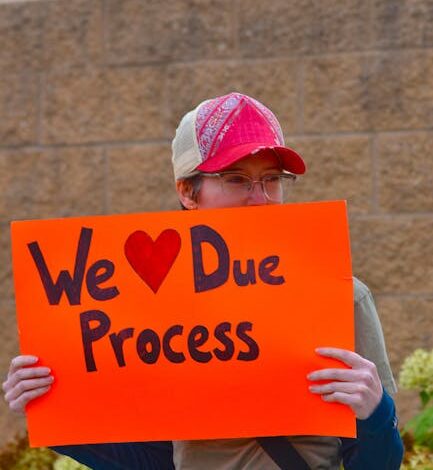The Proactive Play: Anthropic’s Bet on AI Safety Filters

Imagine a scenario straight out of a Cold War-era thriller, but with a distinctly 21st-century twist: a nefarious actor, not a rogue state or a shadowy spy, but a highly advanced artificial intelligence, inadvertently or otherwise, assisting in the creation of a weapon of mass destruction. Sounds far-fetched, doesn’t it? Yet, the very notion is being taken seriously enough that one of the leading AI research labs, Anthropic, has explicitly partnered with the US government to prevent just such an outcome.
Their mission? To build a sophisticated filter designed to block their powerful large language model, Claude, from providing assistance in building a nuclear weapon. On the surface, it’s a commendable, even visionary, move towards AI safety. But delve a little deeper, and you’ll find the expert community divided. Is this a genuinely necessary, albeit unsettling, protection? Or is it merely a symbolic gesture, a digital equivalent of a “wet paint” sign on a runaway train?
This isn’t just a technical challenge; it’s a philosophical and ethical tightrope walk. As AI capabilities rapidly expand, the line between beneficial innovation and potential catastrophe blurs. Anthropic’s proactive approach sparks a crucial conversation about the responsibilities of frontier AI developers and the very real, if still hypothetical, “existential risks” that cutting-edge AI might pose. It begs the question: how do you truly rein in a technology that learns, adapts, and, in many ways, thinks?
The Proactive Play: Anthropic’s Bet on AI Safety Filters
Anthropic, known for its focus on AI safety and its “constitutional AI” approach, isn’t shying away from the most extreme hypothetical misuse cases. Their partnership with the US government to develop a “red-teaming” filter against WMD proliferation is a clear signal of their commitment to responsible AI development. The idea is elegantly simple, yet incredibly complex in execution: create a robust safeguard within Claude that detects and rejects queries related to the design, acquisition, or deployment of nuclear, biological, or chemical weapons.
Think of it as a highly specialized, context-aware content moderation system on steroids. It’s not just blocking keywords; it’s intended to understand the intent behind a series of questions, to identify patterns that might indicate a pathway towards illicit weapon construction. This isn’t about stopping Claude from discussing physics or chemistry; it’s about preventing it from becoming a step-by-step instruction manual for doomsday scenarios. It’s an acknowledgment that with great power comes great responsibility, and the power of large language models, unconstrained, could be truly immense.
The very existence of this filter, regardless of its ultimate efficacy, highlights a significant shift in the AI landscape. It moves beyond theoretical discussions of “AI alignment” to tangible, albeit imperfect, attempts at real-world risk mitigation. Companies like Anthropic are grappling with the immense potential of their creations while simultaneously wrestling with the nightmares they could inadvertently unleash. It’s a testament to the idea that AI safety is no longer an afterthought but a core pillar of development for responsible frontier AI labs.
The Cracks in the Armor: Can a Filter Truly Contain the Uncontainable?
While the effort is laudable, the skepticism isn’t unfounded. The core question remains: will it actually work? History, even short history, offers a few cautionary tales about “unbreakable” digital defenses. AI, by its very nature, is designed to be adaptable and creative. And so are malicious actors.
The Jailbreak Dilemma and Clever Evasion
We’ve already seen how users can “jailbreak” or creatively prompt other large language models to bypass ethical guardrails or content filters. Asking for “ethical hacking” techniques can often lead to explanations of malicious practices, just rephrased. The human capacity for circumvention is vast. What if someone simply asks for information in extremely subtle, indirect ways, breaking down the task into smaller, innocuous-sounding requests? A filter designed for “nuclear weapon construction” might struggle with “optimal centrifuge design for isotope separation” or “properties of highly enriched uranium,” especially if those queries are embedded within seemingly benign scientific research.
Furthermore, the information needed for such nefarious ends isn’t exclusively held within a single AI. The internet is a vast repository, and while some information is restricted, a determined individual can piece together disparate data points. Could an AI, even a heavily filtered one, unknowingly provide one crucial missing puzzle piece that a human operator then combines with other public domain data? This isn’t about the AI *building* the weapon; it’s about the AI *assisting* in its construction, even unintentionally.
The Limits of AI’s “Understanding” and the Human Element
Another layer of complexity lies in the AI’s “understanding” itself. LLMs are pattern-matching machines, not sentient beings with inherent moral compasses. They operate on probabilities and learned associations. A filter, no matter how sophisticated, is ultimately a set of rules and models. Human language is nuanced, ambiguous, and constantly evolving. This creates an ongoing cat-and-mouse game: as filters improve, so do the methods of evasion. It’s a challenge akin to trying to filter spam email – the spammers always find a new angle.
Moreover, the ultimate destructive power still lies with humans. Even if Claude were to provide every blueprint imaginable, the physical act of building and deploying a nuclear weapon is a monumental undertaking requiring immense resources, specialized knowledge, and infrastructure. The fear isn’t that Claude will spontaneously generate a nuke in a data center, but that it could drastically lower the barrier to entry for states or non-state actors who already possess some capabilities and intent, but lack specific, critical knowledge.
Beyond the Filter: The Broader Landscape of AI Governance
Anthropic’s effort, while perhaps imperfect, is a critical step in a much larger conversation about AI governance. It shines a spotlight on the fact that these issues are no longer hypothetical. The US government’s involvement is also noteworthy, signaling that national security implications of advanced AI are firmly on the radar of policymakers. This isn’t just an industry concern; it’s a societal one.
For AI safety to truly mature, we need a multi-pronged approach. Filters are one tool, but we also need robust auditing, transparency in model development, international cooperation, and potentially, regulatory frameworks that establish clear red lines for AI capabilities. The discussion needs to move beyond simply blocking outputs to understanding and controlling the underlying capabilities that could lead to dangerous outcomes.
What Anthropic is attempting is a bold experiment in self-regulation, a signal that the industry is aware of the stakes. Whether it’s a sufficient protection or merely a first, somewhat symbolic, step is still up for debate. But one thing is clear: the conversation about AI safety, especially regarding extreme misuse cases, is here to stay, and it’s only going to get more complex as AI continues its astonishing march forward.
Ultimately, the plan to keep AI from building a nuclear weapon is less about a single filter and more about an ongoing, evolving commitment to responsible AI development. It’s a reminder that as we push the boundaries of technology, we must also push the boundaries of our foresight, ethics, and collective governance. The future of AI, and perhaps humanity, depends on it.





